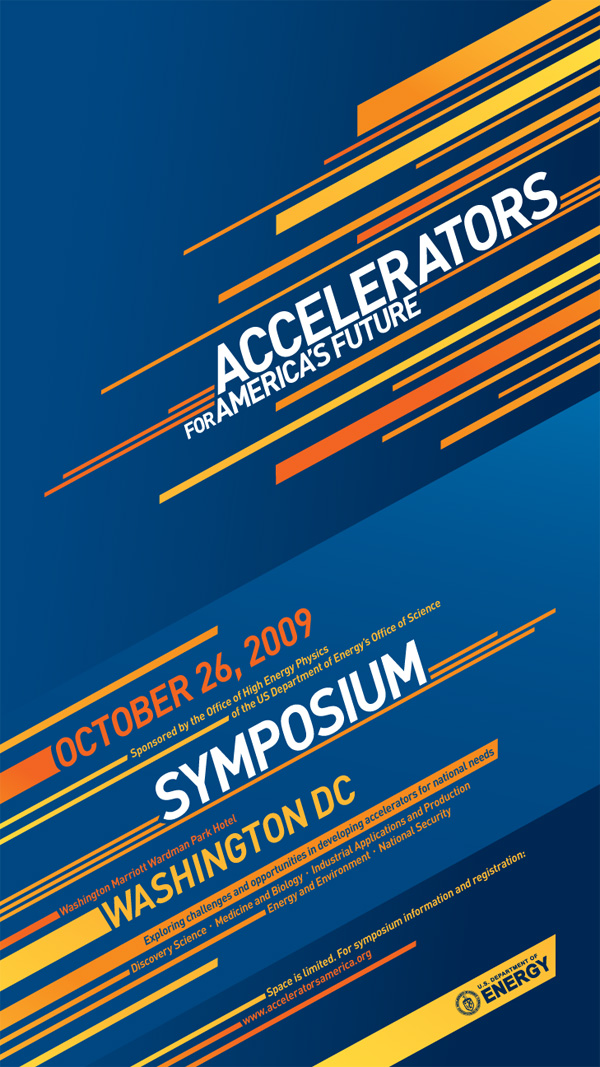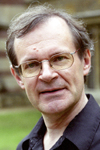Director's Corner
29 October 2009
Accelerators everywhere – the ILC in context
Today's issue features a Director's Corner from Brian Foster, Global Design Effort European Regional Director.
Although not an aficionado of "Twitter" or "Facebook", the answer to the question "What are you doing right now" happens for once to be interesting. In an effort to meet my copy deadline, I am writing this during the lunch break in the "Accelerators for America's Future" meeting held in Washington, D.C. and sponsored by the US Department of Energy. The meeting is intended to raise the profile and set the strategy for the future of accelerator physics in the US. The morning's talks have been in turn illuminating, amusing, and infuriating. Read on.
 Brian Foster writes from the the "Accelerators for America’s Future" meeting held at Washington, D.C. Brian Foster writes from the the "Accelerators for America’s Future" meeting held at Washington, D.C. |
Although I am not an accelerator physicist myself, by far the greater part of my research time these days is spent as ILC European Regional Director, so I have picked up some smattering of familiarity with the field. My association with accelerator physics however goes back much further. For many years I have been convinced of the obvious facts that progress in particle physics relies on advances in accelerators, and that accelerators permeate all our lives. Thus they form a very suitable vehicle for both outreach – another of my lifelong preoccupations – and "impact", "knowledge exchange", "technology transfer" or whatever is the latest buzz-word governments have coined to try to make us blue-skies researchers more "relevant". These convictions were the reason I founded the John Adams Institute of Accelerator Science (JAI), a joint enterprise of Oxford and Royal Holloway, University of London, which is shortly to welcome our ILC colleague Andrei Seryi as Director to succeed Ken Peach. These were also the reasons why I attended the Washington meeting, so I was very gratified that the JAI was mentioned during the meeting as a template that the US might look to in expanding its education programme in accelerator science.
The importance of educating graduate students in accelerator science, and the all-pervading nature of accelerators, were strongly emphasised in the introductory remarks by Denis Kovar and William Brinkman, the new head of the Office of Science at DOE. The ILC also came in for numerous mentions, as I will remark on further below. However, by far the highlight of the morning session was the talk by Dr Norman Augustine, the former CEO of Lockheed-Martin and a familiar name to many of us through his involvement in various US Government study panels, in particular EPP2010. He strongly endorsed the value of accelerators to the scientific future of the United States. He made a couple of remarks that I found very encouraging, characterising particle physics as exciting, brain stretching, and important, as well as asking what could be more exciting than discovering a new particle that resolves some of the outstanding questions in physics theory. He also told an extremely revealing anecdote in the context of remarking that the age when substantial R&D was carried out by companies in-house in facilities such as the legendary Bell Labs, was over. His own company, Lockheed-Martin, had become extremely excited about a particular piece of R&D, to the extent that they intended to substantially increase their R&D funding to pursue it. Although this was hardly noticeable on the company's overall balance sheet, the CEO was so excited by the prospects the R&D opened up that he gave a presentation on it to investment managers in Wall Street. Even before he finished speaking the audience was leaving to begin selling the company's stock, which dropped by 30% over the next few years. When asked what the rationale for this was, an anonymous Wall Street analyst said, and I paraphrase, “Look, the payback time for R&D is of order 10 years – the average stock holder holds stock in your company for 18 months; by the time your R&D has come to fruition, they will probably hold stock in one of your competitors and will be glad if you have no good new ideas. In short, there is no way we can recommend investment in a firm with such short-sighted management.” Perhaps it is this particular market force that is driving the moves, very apparent in the UK at least, to shift the emphasis towards nearer-market research. If the markets will no longer let companies invest in R&D, leaving governments the only providers of funds, and governments are unwilling to increase the total funding for R&D in the new financial landscape, this re-direction seems inevitable if new products are to emerge.
This was the illuminating part of the morning that I mentioned above. The infuriating part was Dr Augustine's reaction to a DOE number on the "cost" of ILC of $20B that Dr Brinkman had mentioned during his remarks. Dr Augustine remarked that when he had last been involved with ILC during EPP2010 the figure was $10B, and he clearly left the room thinking the ILC cost was out of control. We all know that this is not true and that we are working hard to reduce the cost of the ILC through the Accelerator Design and Integration (or Strawman Baseline 2009) process. The main difference in "the ILC cost" noticed by Dr Augustine is that the DOE is now extrapolating using what they believe is a likely start date and spend profile for ILC combined with a model for inflation at approximately 4% to correct each year's notional budget into "then-year" prices, i.e. including inflation. Summing this up for the ILC construction period, together with an estimate of required contingency, gives the $20B figure. When Dr Augustine hears this number, he thinks ILC costs have grown – what has in fact grown is the conservatism of the DOE's accounting practices. If one were to state the price of a cup of coffee in 2025 in similar terms, stock in Starbuck's would suffer a similar fate to that of Lockheed-Martin in Dr Augustine's anecdote. Clearly we not only need to bring our cost containment and hopefully reduction efforts to successful fruition, perhaps even more importantly we need to make sure that this real cost information is widely propagated to everyone, particularly influential friends of particle physics such as Dr Augustine.
Now, back to the meeting. The afternoon session has just begun with Maury Tigner telling us the history and future of accelerators. They really are the basis for much of modern science, since so much of it relies on the determination of structure, whether of the fundamental structure of the universe or the character of the Ribosome, for which this year's Nobel Prize in Chemistry was awarded. We need the ILC to join the ranks of operating accelerators as soon as possible; they truly are everywhere.
-- Brian Foster
